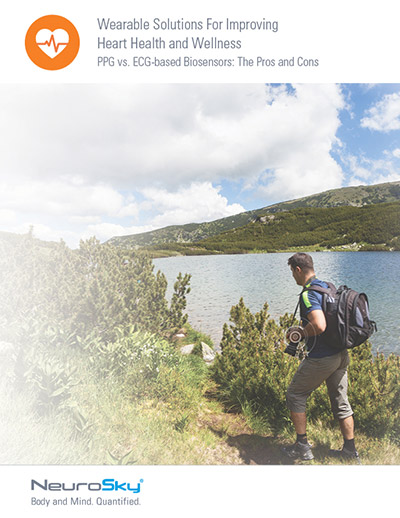Advancements in technology continue to make it easier for consumers from all walks of life to delve into tracking their health and wellbeing. Heart rate variability (HRV) is becoming an increasingly popular metric for better understand overall health and fitness. This post will help offer readers a better understanding of what HRV is, as well as the benefits associated with tracking it. It will also offer an overview of ECG biosensors and algorithms that are used to track HRV, and how they provide impressive insight into a user’s wellness.
What is Heart Rate Variability?
Before we get into the details of how to track HRV, it’s important to understand exactly what it is. It is normal for the heart rate to change between tasks. In fact, heart rate can change quickly even when doing something as basic as inhaling and then exhaling. Heart rate variability tracks these naturally occurring variations in intervals between your heartbeats.
What Are the Benefits of Tracking Heart Rate Variability?
Clinical research has shown that people with a higher HRV experience lower stress levels and have greater overall heart health than those with a lower HRV. Tracking HRV helps to collect data on a heart’s ability to meet the needs of the body at any given time. It can also help users track their stress levels, mood, recovery times, and more.
ECG Biosensors
Electrocardiogram (ECG) biosensors allow users to accurately monitor the biopotential generated by the electrical signals that control the expansion and contraction of the heart chambers. For years, this data was collected through electrodes that were attached to the body; but with the rise of biosensor technology, ECG sensors such as NeuroSky’s CardioChip are enabling wearable and mobile technology so that HRV can be obtained through personal devices, often worn on the wrist.
The CardioChip is at the heart of NeuroSky’s ECG biosensor technology. By gathering and displaying data in an easy-to-understand manner, the CardioChip gives users access to information that was never before seen as practical to acquire. The heart rate variability data the CardioChip tracks can provide users with crucial details about their health, as well as offer solutions that can help to make a positive impact on their lives.
Biometric Algorithms
NeuroSky’s advanced biometric algorithms make it possible for wearable and mobile device users to easily understand the data collected by the CardioChip. Not only do these algorithms provide insight on fitness, they can also be used to monitor the health of a recovering heart.
NeuroSky’s biometric algorithm for tracking heart rate variability offers an incredibly intuitive look at a user’s overall heart fitness. In fact, in just 30 seconds it is able to provide an accurate calculation of an HRV, and can go on to maintain tracking of improvements over the span of any fitness program.
For Your Health
As technology continues to evolve, it’s becoming more practical for users to track their health and fitness levels as they strive to achieve their goals. Monitoring heart rate variability is an important way for a user to understand where they are, and more importantly, plot a course toward improved health and wellness.
To learn more about tracking heart rate variability and its benefits, download the free whitepaper, Wearable Solutions for Improving Heart Health and Wellness.



